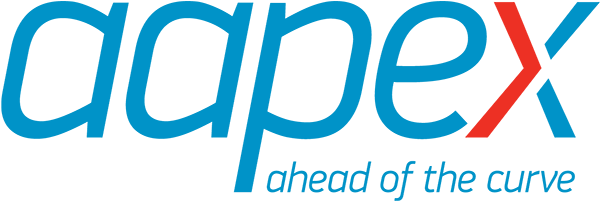The Top 4 Opportunities That Come With Access to Vehicle Data
Monday, July 09, 2018

By Bill Hanvey, president and CEO, Auto Care Association
The reactive approach to data privacy concerns and misuse of data extends far beyond the controversies happening currently with Facebook, Google and smartphones, which are uncoincidentally the most permeating digital forces with which humankind has ever dealt. Though consumers are very aware of their data privacy (or lack of) when it comes to the internet and social media, the vast majority of motorists have no idea that their personal information is also being collected and aggregated by their own vehicles, then sold to the highest bidder.
For the few consumers who are aware, their reactions in the comments of news articles tell the tale:
“I really don’t like the idea of companies profiting off my daily life without me consenting to it.”
“For my next car purchase, ensuring my own privacy will necessarily be a major deciding factor.”
“I don’t pay $30k [for a car] to be used as someone else’s free data point.”
As a member of the global automotive aftermarket, you know that these cars can tell you a lot about what they need to operate safely, efficiently and reliably. The data cars collect could be revolutionary and invaluable to our industry – but only if we have access to it, and consumer privacy is considered on what they want shared, and with whom.
Earning the right for consumers to choose where their vehicle data is sent reveals four key opportunities:
1. Increasing safety on the road. Connected cars and vehicle data create the opportunity for cars to “talk” to each other, enabling communication that could signal for a car’s autonomous system to avoid an accident. With an ITS (Intelligent Transportation System) in place, vehicles could even “talk” to the roadways and surrounding traffic signals, giving cues as to geolocation and speed to reduce congestion.
2. Minimizing costs when it comes to predictive maintenance and part failure. This benefit not only saves the consumer money, but also increases trust in their independent repair facility. It will also save dollars on product returns, and provide more accurate data on replacement rates.
3. Improved customer relationships. Imagine a world where the lengthy process of needing to answer calls, look up parts, order parts and notify customers in a timely manner could be done with just a few clicks of a button. Telematics and vehicle data make it possible for a consumer’s car to: tell you when there is a part that needs to be replaced; order the preferred part; deliver it to you; and notify the driver seamlessly so that all they have to do is drive into a repair bay, obtain service and be on their way. Research in our Auto Care Factbook 2019 shared the finding that customers who have a positive customer experience like this are more likely to return to an outlet.
4. Entirely new product lines and services designed to meet the demands of today’s consumer. If you attended the AAPEX 2017 keynote that I presented with Bill Long, president and chief operating officer, Automotive Aftermarket Suppliers Association (AASA), you may have seen a slide on the growing ecosystem of telematics service providers. Once niche and occupied by only a handful of players, this market has exploded with not only new players, but new business models, catering to everything from safety and security, to autonomy, sensors, in-car assistance and even intelligent manufacturing.
Here comes the downer: at this moment, automakers have total control over this valuable data, and could potentially disrupt this cycle.
Your voice as an aftermarket professional is critical – and we need you to get informed and involved. If we don’t rise up together:
• Independent repair shops will be cut out of the picture and be denied the chance to compete on fair ground;
• Customers will be forced to utilize higher-priced service departments and parts; and
• Innovation will be monopolized.
Help us shape the industry for years to come – the first step is getting educated. During AAPEX 2018, there is a plethora of AAPEXedu sessions and programs designed to keep you ahead of the curve when it comes to vehicle data and technology.
Tuesday, Oct. 30
2019 Aftermarket Outlook presented by Nathan Shipley, NPD (also offered on Wednesday, Oct. 31)
Emerging Vehicle Technologies and their Impact on the Aftermarket presented by Evan Hirsch, Strategy&/PwC
Wednesday, Oct. 31
Dongles, Shops and CRM Applications for the Aftermarket presented by Jorge Antico, eAutoClub, Inc., and Parker Swift, MechanicAdvisor
Thursday, Nov. 1
ADAS Forum – Saving Lives through Retrofitting ADAS Existing Cars
ADAS Forum – Servicing ADAS-Enabled Vehicles presented by Joe Register, Auto Care Association
Future Vehicle Technology: Consequences to the Aftermarket presented by Derek Kaufman, C3 Network
How Telematics is Impacting National Service Chains presented by Chris Blanchette, Bridgestone Retail Operations
More sessions will be included throughout the summer as they are announced – add these to your schedule today in the AAPEX app. Also don’t forget to add Mobility Garage (formerly Mobility Park), now in the Bellini and Titian Ballrooms at the Venetian, and Technology of Tomorrow (formerly the Technology Intersection) in the Venetian Ballroom, as stops on your list to get hands-on experience with the latest vehicle technology. Also be sure to visit the Let’s Tech stage in the level two lobby of the Sands to get even more insider knowledge in 20 minutes or less.
I look forward to seeing you there.
